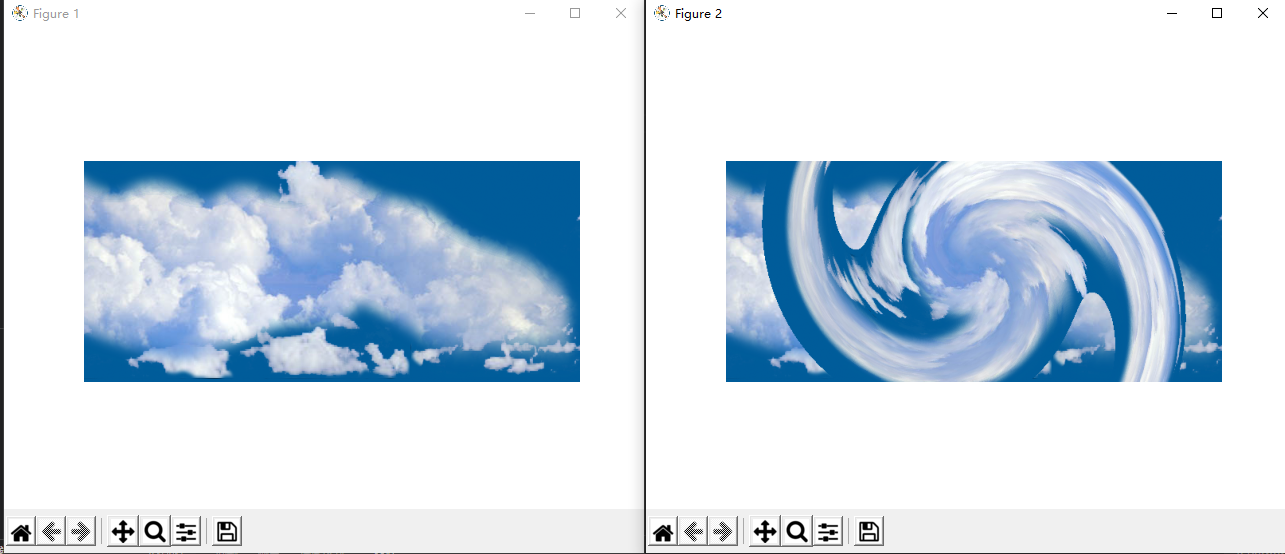实现效果: 实现代码 import numpy as npfrom skimage import img_as_floatimport matplotlib.pyplot as pltfrom skimage import ioimport mathimport numpy.matlibfile_name2='D:/2020121173119242.png' # 图片路径img=io.imread(file_name2)im
实现效果:

实现代码
import numpy as np
from skimage import img_as_float
import matplotlib.pyplot as plt
from skimage import io
import math
import numpy.matlib
file_name2='D:/2020121173119242.png' # 图片路径
img=io.imread(file_name2)
img = img_as_float(img)
row, col, channel = img.shape
img_out = img * 1.0
degree = 70
center_x = (col-1)/2.0
center_y = (row-1)/2.0
xx = np.arange (col)
yy = np.arange (row)
x_mask = numpy.matlib.repmat (xx, row, 1)
y_mask = numpy.matlib.repmat (yy, col, 1)
y_mask = np.transpose(y_mask)
xx_dif = x_mask - center_x
yy_dif = center_y - y_mask
r = np.sqrt(xx_dif * xx_dif + yy_dif * yy_dif)
theta = np.arctan(yy_dif / xx_dif)
mask_1 = xx_dif < 0
theta = theta * (1 - mask_1) + (theta + math.pi) * mask_1
theta = theta + r/degree
x_new = r * np.cos(theta) + center_x
y_new = center_y - r * np.sin(theta)
int_x = np.floor (x_new)
int_x = int_x.astype(int)
int_y = np.floor (y_new)
int_y = int_y.astype(int)
for ii in range(row):
for jj in range (col):
new_xx = int_x [ii, jj]
new_yy = int_y [ii, jj]
if x_new [ii, jj] < 0 or x_new [ii, jj] > col -1 :
continue
if y_new [ii, jj] < 0 or y_new [ii, jj] > row -1 :
continue
img_out[ii, jj, :] = img[new_yy, new_xx, :]
plt.figure (1)
plt.imshow (img)
plt.axis('off')
plt.figure (2)
plt.imshow (img_out)
plt.axis('off')
plt.show()
以上就是Python 实现 PS 滤镜的旋涡特效的详细内容,更多关于python ps滤镜漩涡特效的资料请关注易盾网络其它相关文章!
